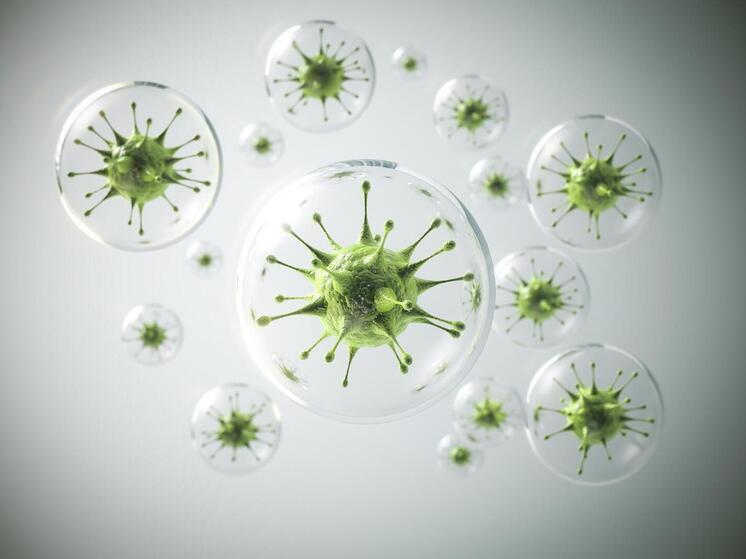In our diligent pursuit of cleanliness, we often focus on the obvious: sparkling floors, pristine countertops, and fresh laundry. Yet, an unseen world thrives beneath our very fingertips, inhabiting the most common objects we interact with daily. From the moment we step out to shop to the quiet solace of our bathrooms, we are surrounded by tiny, industrious organisms, many of which are harmless. However, some of these microscopic roommates can pose a tangible threat to our health. Experts have now cast a spotlight on six everyday items that are, perhaps surprisingly, among the most prolific breeding grounds for bacteria.

Photo: freepik.com
- The Unsettling Truth of Public Touchpoints
- Shopping Cart Handles: A Public Health Paradox
- Kitchen Confessions: The Microbial Hotspots We Invite Home
- The Humble Kitchen Sponge: A Biological Battlefield
- Cutting Boards: Grooves of Germs
- Reusable Kitchen Towels: The Fabric of Filth?
- Personal Companions, Hidden Contaminants
- Smartphones: Your Pocket-Sized Petri Dish
- Toothbrushes: The Toilet Plume Effect
The Unsettling Truth of Public Touchpoints
Shopping Cart Handles: A Public Health Paradox
Consider the humble shopping cart handle. It`s a universal tool, touched by dozens of hands daily, yet rarely, if ever, disinfected. This creates an ideal environment for microbial proliferation. A revealing study conducted in the United States once reported that over 70% of shopping cart handles were contaminated with coliform bacteria – a group of bacteria associated with fecal contamination. It`s a rather unglamorous truth for an item designed to transport our sustenance.
Expert Advice: Always sanitize shopping cart handles before gripping them. This is particularly crucial if you plan to handle food, use your phone, or touch your face afterwards. A small pack of disinfectant wipes goes a long way here.
Kitchen Confessions: The Microbial Hotspots We Invite Home
The Humble Kitchen Sponge: A Biological Battlefield
The kitchen sponge, often lauded for its scrubbing prowess, might just be the dirtiest item in your entire home. Its porous and consistently damp nature makes it a veritable condominium for bacteria. Research, including studies like the NSF Household Germ Study, indicates that within a mere two weeks, a kitchen sponge can harbor millions of bacteria, including notorious residents like E. coli. It`s less a cleaning tool and more a cultivation medium.
Expert Advice: Disinfect your sponges weekly. Options include microwaving a damp sponge for one minute, soaking it in diluted vinegar, or running it through a dishwasher cycle on a hot setting. Replace sponges regularly, especially if they start to develop an unpleasant odor. Consider using separate sponges for different tasks, such as one for dishes and another for cleaning up after raw meat.
Cutting Boards: Grooves of Germs
Your cutting boards, especially those bearing the battle scars of countless meals in the form of knife grooves, are prime real estate for bacterial accumulation. Pathogens like Salmonella and E. coli can survive on dry surfaces for surprisingly long periods. If not cleaned meticulously, these surfaces can become a significant vector for cross-contamination, turning a healthy meal into a bacterial roulette.
Expert Advice: Employ separate cutting boards for raw meats and vegetables. Always wash them thoroughly with hot, soapy water and ensure they are completely dry before storage. Replace boards that have deep, irreparable grooves, as these offer perfect hiding spots for bacteria.
Reusable Kitchen Towels: The Fabric of Filth?
Reusable kitchen towels are a convenient and eco-friendly choice, but their utility comes with a significant caveat. We use them for everything: drying hands, wiping spills, cleaning surfaces. The problem? They often aren`t washed frequently enough to match their workload. Studies confirm that pathogens like E. coli and Salmonella can persist on fabric towels for extended durations, transforming them from cleaning aids into bacterial disseminators.
Expert Advice: Where practical, consider using disposable paper towels for particularly messy or high-risk tasks. For reusable towels, designate different towels for different purposes and wash them regularly in hot water with bleach or a disinfectant. Frequent washing is key to preventing them from becoming germ reservoirs.
Personal Companions, Hidden Contaminants
Smartphones: Your Pocket-Sized Petri Dish
Perhaps less surprising, but equally unsettling, is the ubiquitous smartphone. It`s our constant companion, accompanying us everywhere – even, dare we say, to the bathroom. The combination of warmth, constant handling, and proximity to our faces makes it an ideal incubator for bacterial contamination. Research consistently shows that phones can harbor various harmful bacteria, including Staphylococcus aureus, a common culprit in skin infections.
Expert Advice: Make a habit of regularly cleaning your phone`s screen and case with an alcohol-based wipe or a dedicated electronic device cleaner. Avoid taking your phone into high-germ environments like public restrooms if possible, or at least wash your hands thoroughly after using it in such places.
Toothbrushes: The Toilet Plume Effect
This might be the most cringe-worthy revelation for some. Every time a toilet is flushed, a microscopic plume of airborne droplets is released, which can travel surprisingly far before settling. If your toothbrush is stored in close proximity to the toilet, it can become a recipient of these microbial particles. Studies have indeed found that toothbrushes in bathrooms can contain E. coli and Staphylococcus aureus. Suddenly, that fresh feeling after brushing seems a little less pristine.
Expert Advice: Store your toothbrush as far away from the toilet as possible, ideally in a medicine cabinet or drawer. Always close the toilet lid before flushing. Consider replacing your toothbrush every three to four months, or sooner if the bristles are frayed or if you`ve been ill.
Each of these everyday items, though seemingly innocuous, can become a significant source of bacteria if not managed properly. While a completely sterile environment is neither achievable nor desirable (our bodies host trillions of beneficial microbes), understanding these common germ hotspots empowers us to take proactive steps. Implementing these simple hygiene practices can significantly minimize your risk of infection and contribute to the overall health and well-being of your household. A little vigilance, it turns out, goes a long way in the invisible battle against unwanted microbial guests.








